On September 6th of 2018, I attended The New University in Exile Consortium at The New School, in Manhattan, New York. The New University of Exile website describes the program by stating that:
“We are an expanding group of universities and colleges publicly committed to the belief that the academic community has both the responsibility and capacity to assist persecuted and endangered scholars everywhere and to protect the intellectual capital that is jeopardized when universities and scholars are under assault.”
The New School has a long history of helping refugee scholars. Starting in 1933, The New School’s first president, Alvin Johnson, created the first University of Exile. During the rise of Nazism and the increasing threat of intellectual prosecution, Johnson hired many European scholars as the Graduate Faculty of Political and Social Science. Johnson firmly believed that universities had to play a pivotal a role in protecting independent thought and research. He believed that it was a unendangered university’s responsibility to assist other universities that are under assault.
The New University in Exile has begun working again internationally with Scholar Rescue Fund, and Scholars at Risk, in the midst of new political and military attacks on scholars. In places like Turkey, Iran, India, Yemen, and Syria, universities are being weakened, shut down, and destroyed, forcing scholars to flee or face being prosecuted and jailed. The New University in Exile seeks to be a safe space for displaced scholars. The aim is to create a collaborative community in which these scholars can continue to do research and produce information. The New University has a growing membership of universities, primarily on the east coast, for now, that are joining in the fight for intellectual capital.
During the program there was an in-depth conversation between Kati Marton, a Hungarian-American journalist, and David Miliband, the CEO of International Rescue Committee, that was mediated by the Director of The New School, T. Alexander Aleinikoff. Marton and Miliband discussed how they both where from families of refugees and how this movement was very important to them. One of the main topics that was being discussed dealt with the removal of access to information. Both Marton and Miliband feared that history is being lost with people. They described how “fake news” and social media has played a pivotal role in shaping ideas and opinions about topics ranging from refugees, political movements to advertisements.
Marton discussed her growing fear of the relationship between media outlets and popular vote “demi-gods,” which tied directly into a conversation about the current American political position. Marton’s career as a journalist clearly amplified her worries on this subject, and she gave a clear opinion on America’s lost position as a sanctuary country. While discussing this topic, Miliband argued that we must keep recording all the facts and events to protect all voices.
Although, I agree with, and understand this sentiment, it also made me question the relationship between power, authority and context. Different poisons are going to have a different view of the value that is placed on an item over time. Value, as described by Michelle Caswell in her article, “’The Archive’ is not and an Archive: Acknowledging the Intellectual Contributions of Archival Studies,” is dependent on the way in which an item can attest to the events in which they emerged. Caswell states that “Like, ‘evidence,’ ‘value’ always exists for someone in a particular place at a particular time.” (Caswell, 2016, <p> 16) Therefore, the facts and events that are recorded today, may have different implications dependent on who saves them, how they are later represented, and who is viewing them in the future.
I believe that the key point both Marton and Miliband were stressing though, had more to do with censorship and false media today. They were expressing a need for information access and reliability in today’s political environment in order to help save information capital. Information capital ties in very closely with ideas of information literacy. Information capital is the theory that agues that information has value. It alludes that sharing information is a means of sharing power. Although, the word value in this theory holds a similar meaning to the value that archivist Caswell mentions, I think there should be a distinction. Value as placed in the Information Capital theory places the importance on how information forms power, rather than how power is chosen in a material. It is important to note that The New University in Exile is working within the western tradition of knowledge. The power to make a record, to name, preserve, mediate, and access, (Schwartz & Cook, 2002, pp.5) is being placed in the hands of scholars and organizations. This does not however, change the importance stressed by Marton, Milibrand, and The New University in Exile, that the ability to have a chance to create information is powerful in its own right and should be a human right.
At the end of the program we also heard from two scholars, that are currently working within the New University of Exile, describe their plight. Cem Ozatalay and Mohammat AlAhmad are professors that have fled their home countries and have begun teaching in America with the help of The New University in Exile, Scholar Rescue Fund and Scholars at Risk. Hearing these professors talk about the prosecution they faced and the struggles they endured to come to America was very moving. They talked about facing prison time for their thoughts and ideas and how they had to smuggle their families across borders to escape. Through these programs, these scholars were able to continue researching, learning and teaching.
The New University in Exile is clearly making a stand that stresses the importance of creation and dissemination of information. The university as a mode of expressing and sharing ideas has been a long standing tradition in the western world. The act of a political power silencing voices, and the need to protect them, overrides my concerns about future value placed on the information produced by the voices, at this time. I, like Marton, and Miliband, believe that the most important thing right now is to create, so at least sometime in the future, there will be a possibility of both sides of history being present.
Important websites for more information on this topic:
https://newuniversityinexileconsortium.org
http://www.scholarrescuefund.org
https://www.scholarsatrisk.org
References:
AlAhmad, M., Aleinikoff, A., Fanton, J., Mack, A., Marton, K., Miliband, D., Ozatalay, C., Van Zandt, D. (2018, September). The New University in Exile Consortium, The New School, New York.
Caswell, M. (2016). “‘The Archive’ Is not an archives: On acknowledging the intellectual contributions of archival studies.” Reconstruction: Studies in contemporary culture, 16. Retrieved from https://esscholarship.org/uc/item/7bn4v1fk
Schwartz, J., & Cook, T. (2002). “Archives, records and power: The making of modern memory.” Archival Science, 2, pp. 1-19.

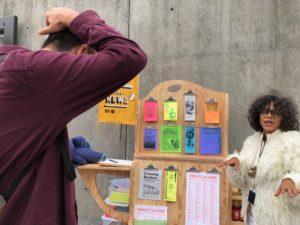

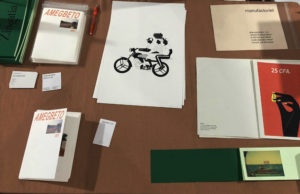
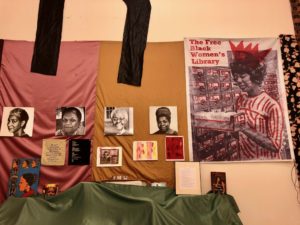
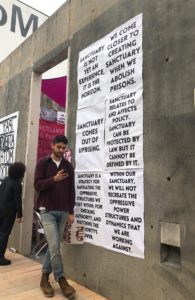
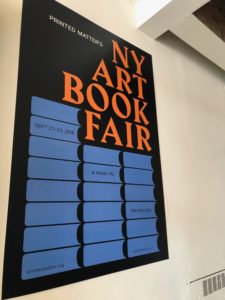 References
References